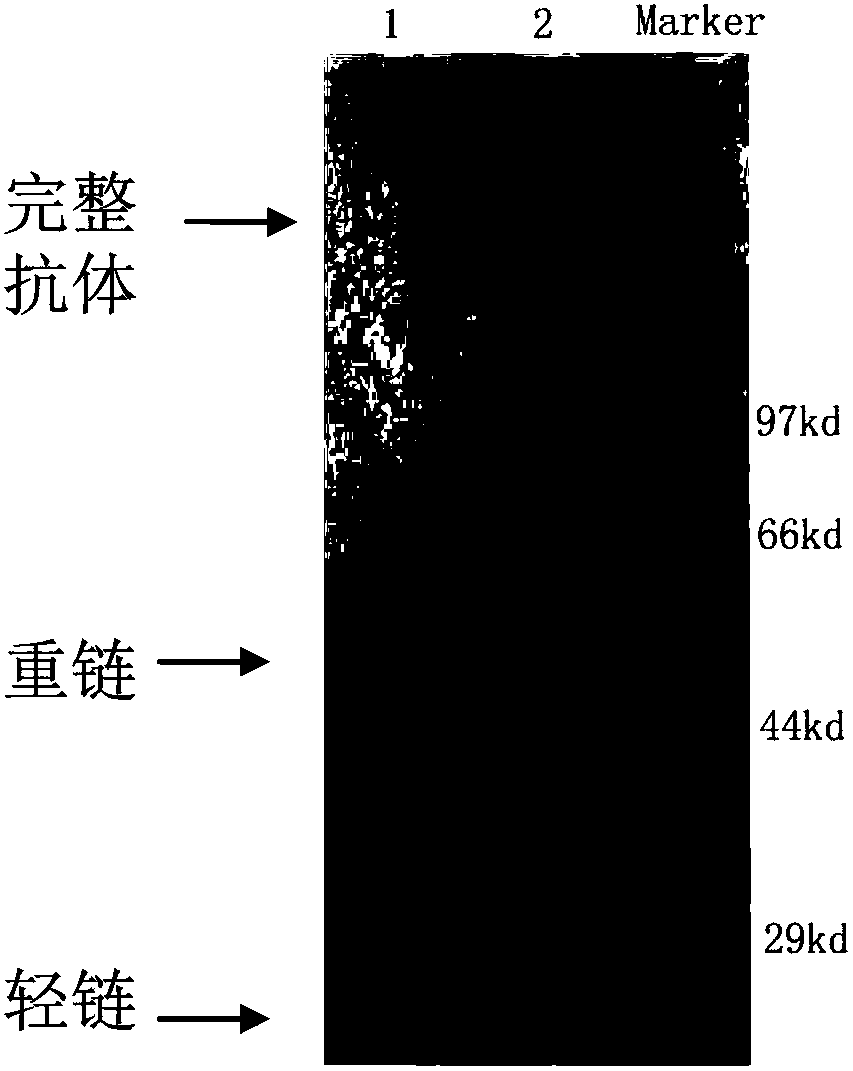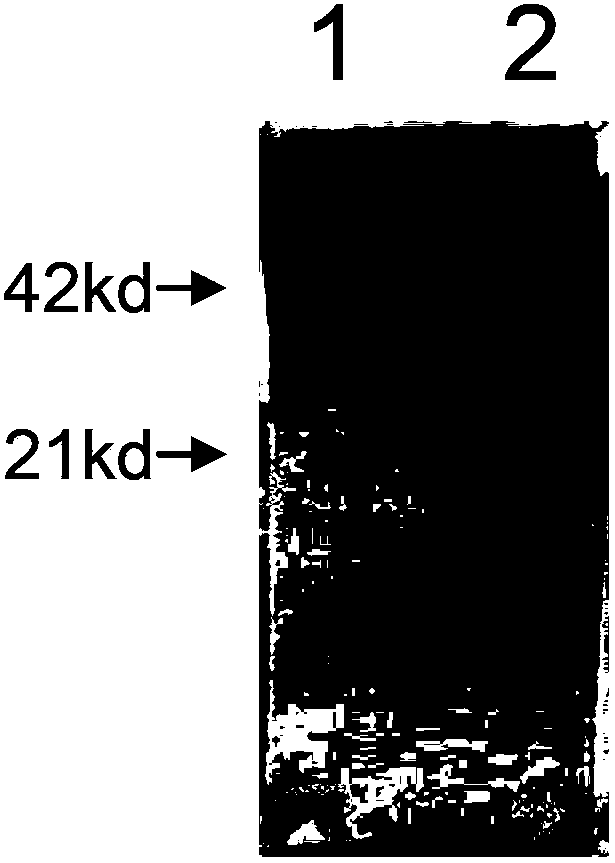Monoclonal antibody for antagonistic inhibition of combination of vascular endothelial cell growth factor and receptor thereof, hybridoma cell line secreting monoclonal antibody, and use of monoclonal antibody
A hybridoma cell line, monoclonal antibody technology, applied in the direction of anti-growth factor immunoglobulins, antibodies, anti-tumor drugs, etc., can solve the problem of inability to neutralize, inhibit and promote angiogenesis.
- Summary
- Abstract
- Description
- Claims
- Application Information
AI Technical Summary
Problems solved by technology
Method used
Image
Examples
Embodiment 1
[0053] Embodiment 1: establishment and screening identification of hybridoma cell lines stably secreting anti-VEGF monoclonal antibody
[0054] Step 1. Preparation of recombinant human VEGF165 protein (immunization antigen)
[0055] Preparation of recombinant human VEGF165 protein (immune antigen) (prepared by the method recorded in the Chinese invention patent application No. 2007100473522, titled "Isolation and purification of recombinant human vascular endothelial cell growth factor, in vitro chemical labeling and its application") :
[0056] The gene fragment encoding the complete open-reading frame (ORF) of human VEGF165 was amplified from the cDNA library of human lung tissue cells by PCR technology, which was correctly identified by sequence determination and treated with restriction endonucleases. It was cloned into the yeast expression vector pPic9K (Invitrogen Company) vector. The expression plasmid pPic9K-VEGF165 was obtained, transformed into Pichia pastoris, and...
Embodiment 2
[0065] Example 2. In vitro preparation and purification of anti-VEGF monoclonal antibody
[0066] In this example, the separation and purification of anti-VEGF monoclonal antibody (PV19) adopts affinity chromatography. The purification steps are as follows: After the PV19 hybridoma cells are amplified, they are inoculated in 200ml of serum-free 1640 medium, cultured at 37°C for 5 days, and then the supernatant filtrate is loaded into the Fast Flow containing Protein G-Sepharose (purchased from General Electric Company) affinity chromatography; the affinity chromatography column was eluted with PBS to remove impurity proteins, and then the adsorbed antibody protein was eluted with low pH (2.7) glycine (0.1M) solution. The eluent was adjusted to pH 7.0 with 1mol / L Tris (pH 9.0), and then dialyzed against 10 times the volume of 1x PBS for 12 to 16 hours (the solution was changed 2-3 times during the period), and the dialyzed sample was filtered through 0.45μm Purified PV19 monoc...
Embodiment 3
[0068] Example 3. Western blot analysis and identification of PV19 monoclonal antibody binding to human VEGF protein and other related proteins
[0069] image 3 The pattern of experimental results for Western blot analysis to identify the specific binding of PV19 monoclonal antibody to human VEGF165 protein. The VEGF protein in the experiment was derived from the recombinant human VEGF165 protein expressed in Escherichia coli (product of R&D System, USA). The VEGF165 protein was first dissolved in PBS-1%BSA solution (50 μg / ml), and 10 μl of each sample was loaded for 15% SDS-PAGA electrophoresis, and the gel protein band was transferred to the PVDF fiber membrane according to the conventional method (product of Millipore Co., Ltd. ), blocked with 5% skimmed milk powder overnight at 4°C, added the PV19 monoclonal antibody prepared in Example 2, and reacted at room temperature for 2 hours, then used TBS-T (pH7.5, 0.05mol / l Tris-Hcl, 0.15mol / l NaCl, 0.05% Tween-20) to wash 3 ...
PUM
 Login to View More
Login to View More Abstract
Description
Claims
Application Information
 Login to View More
Login to View More - R&D
- Intellectual Property
- Life Sciences
- Materials
- Tech Scout
- Unparalleled Data Quality
- Higher Quality Content
- 60% Fewer Hallucinations
Browse by: Latest US Patents, China's latest patents, Technical Efficacy Thesaurus, Application Domain, Technology Topic, Popular Technical Reports.
© 2025 PatSnap. All rights reserved.Legal|Privacy policy|Modern Slavery Act Transparency Statement|Sitemap|About US| Contact US: help@patsnap.com



